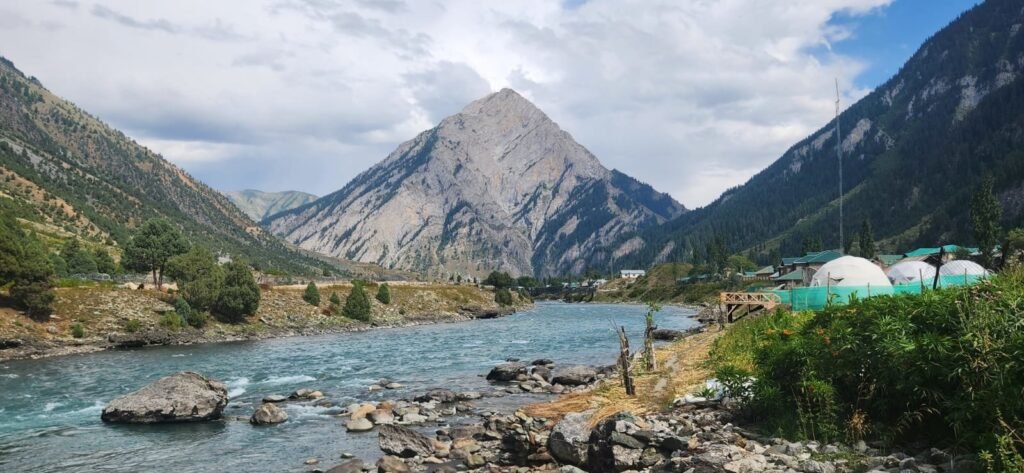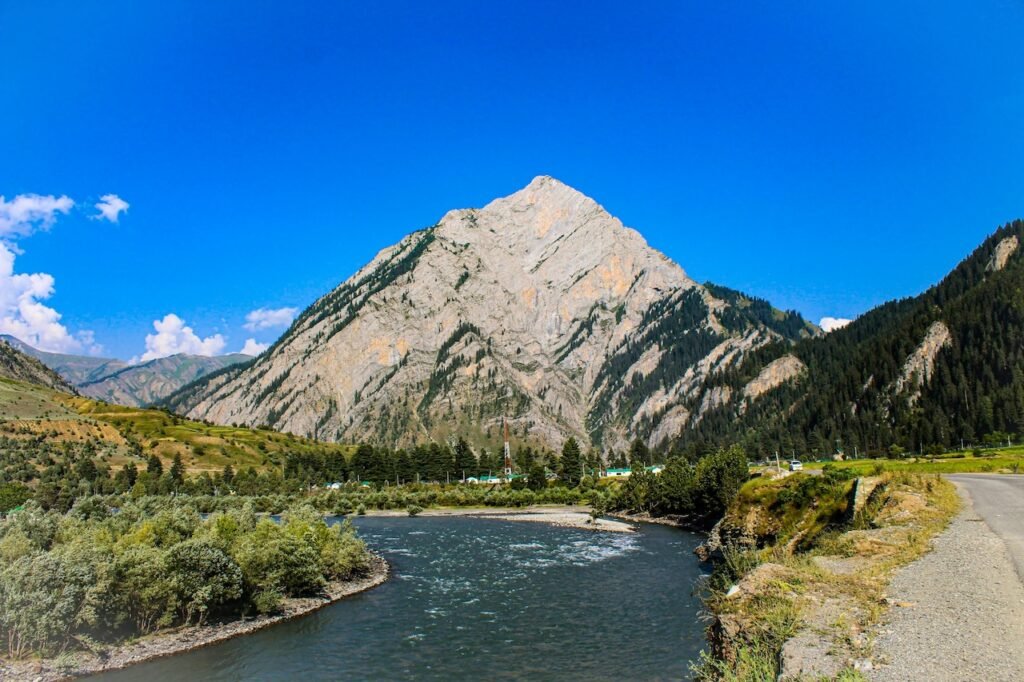In March 2025, Gurez Valley officially welcomed foreign tourists, marking a historic turning point for one of Kashmir’s most remote and culturally vibrant destinations. The move signals a new era of opportunity, as state and local authorities pledge to develop sustainable tourism infrastructure and promote community-led initiatives. With awards for offbeat tourism and heritage villages, Gurez is poised for a renaissance, combining crystal rivers, legendary peaks, and the unique Dardic culture to create a sustainable, inclusive tourism model for the future of Kashmir.
Gurez Valley: The Untold Jewel of Kashmir
Nestled deep in the Himalayas, Gurez Valley remains one of India’s best-kept secrets, a land of enchanting beauty, ancient legends, and vibrant culture, waiting to be explored by discerning travellers seeking offbeat destinations. Situated near the Line of Control in Jammu & Kashmir’s Bandipora district, the valley offers an extraordinary blend of history, adventure, and cultural depth rarely found elsewhere.
Location & Geography
Located approximately 120 kilometres north of Srinagar at an altitude of around 2,400 meters (8,000 feet), Gurez Valley stretches along the Kishanganga River and is surrounded by snow-capped mountains. Its remote position has preserved both its natural landscapes and traditional way of life.
- Coordinates: ~34.6° N, 74.9° E
- District: Bandipora, Jammu & Kashmir
- Nearest City: Srinagar (140 km)
- Altitude: 2,400 meters (approx. 8,000 ft)
- River: Kishanganga (Neelum)
Getting There: Route & Access
The journey to Gurez is as enchanting as the valley itself:
From Srinagar:
- Srinagar – Sumbal – Bandipora – Razdan Pass – Dawar (Gurez Valley)
- Distance: ~140 km
- Typical travel time: 5–7 hours by road
- Razdan Pass (elevation: 3,300 m), known for breathtaking panoramas, remains open from late spring to early autumn. The valley is typically inaccessible from December to March due to snow.
Travel options:
- Hired cabs from Srinagar or Bandipora
- Private vehicles via Bandipora
- No direct railway; the nearest major station is Jammu, followed by road travel
Historical Tapestry
Ancient Roots: Historically, Gurez was part of ancient Dardistan, a region that included parts of today’s Kashmir, Gilgit, and surrounding areas. The valley lay along a major branch of the Silk Route, facilitating trade between Central Asia and India. Archaeological finds reveal ancient scripts, Kharoshthi, Brahmi, and Tibetan, etched into rocks, pointing to a rich spiritual and commercial past.
Medieval Period: The valley was ruled at various times by powerful dynasties, including the Mauryas, Guptas, Mughals, Afghans, and Sikhs. Medieval Gurez served as a vital strategic gateway, with military campaigns and trade routes passing through.
Modern Era: British colonial officials praised Gurez for its pristine beauty. Sir Walter Lawrence (author of “The Valley of Kashmir”) described it as “one of the most beautiful scenes in all of Kashmir,” its grandeur matched only by its seclusion. The valley was largely closed to outsiders after the 1947 Partition, due to its proximity to the Line of Control, only reopening to public tourism in the 21st century.
Rich Cultural Tapestry
Dardi-Shina Heritage: The region is home to the Dardi-Shina tribe, whose ancestors have lived here for centuries. Shina, a rare Indo-Aryan language with no native script, is widely spoken, along with Kashmiri, Urdu, and Hindi.
Traditions & Festivals: Life in Gurez reflects a traditional rural economy, with animal husbandry and farming sustaining the majority of families. The culture is deeply communal, with villagers gathering for local festivals, poetry, music, and storytelling.
Religious Landscape: Originally inhabited by Hindus and Buddhists, Gurez became predominantly Muslim after the missionary efforts of Mir Sayyid Ali Hamadani and his disciples in the region, with several Sufi shrines scattered around the valley. Today, Islam remains the main religion, with traces of older faiths still visible.

Must-Visit Tourist Spots
Gurez’s natural and cultural beauty shines through its many points of interest:
Other attractions include Habba Khatoon Spring, Wular Lake (en route), and Gurez’s rustic wooden architecture.
Natural Splendours & Wildlife
- Dense forests, meadows with wildflowers, and dramatic mountain views.
- Rare wildlife, including Himalayan brown bears and snow leopards, inhabit the region.
- Picturesque landscapes turn the valley into a white paradise during winter, although access is often cut off due to heavy snowfall.
Economic Impact of Tourism
Tourism has become a significant driver of economic growth in Gurez Valley:
- Homestays, local handicrafts, and agriculture are gaining popularity among tourists, providing direct revenue to local communities.
- Tourism generates employment opportunities in transportation, hospitality, guiding, and crafts.
- Awards such as “Best Offbeat Destination” (2022) and “Best Tourism Village” (2023) have firmly placed Gurez on the tourism map.
- Authorities are focusing on sustainable tourism and infrastructure upgrades to strike a balance between economic needs and environmental preservation.
Culture, Cuisine & Everyday Life
Lifestyle: Life in Gurez is communal and closely knit. Winters are severe, with villagers demonstrating resilience and warmth in the face of sub-zero conditions. Hospitality remains legendary—visitors are welcomed with tea and stories around the hearth.
Food: Typical meals include local breads, stews, fresh river fish, and an abundance of tea. Simple, hearty, and flavorful cuisine reflects local resources and traditions.
Handicrafts: The locals produce distinctive woollen items, wooden artefacts, and hand-embroidered pieces.
Recent News & Developments
- Gurez Valley was opened to foreign tourists in February 2025, boosting its global profile.
- The local government, with support from the Union Ministry of Tourism, is investing in infrastructure, connectivity, and eco-friendly tourism initiatives.
- Villagers have appealed for improved winter connectivity, possibly through tunnels or all-weather roads, as well as a greater emphasis on eco-tourism in response to the growing number of visitors.
- Security remains robust due to the proximity to the Line of Control; the area is considered safe for tourists, provided normal precautions are taken.
Best Time to Visit
The ideal period to explore Gurez Valley is from May to October, when the weather is pleasant, wildflowers are in bloom, and road access is smooth. Winters (December–March) are reserved for the adventurous, as roads are often snowbound, but the valley transforms into an ethereal snowscape.
Sustainable Tourism & Future Prospects
As tourism booms, focus is shifting to sustainability:
- Responsible tourism practices are being encouraged to protect the valley’s fragile ecology.
- Community-based initiatives are helping Gurez retain its identity amid rising visitor numbers.
FAQs about Gurez Valley
Is Gurez Valley safe for tourists?
Yes, Gurez Valley is open for tourism and considered safe. The Indian Army maintains a strong presence, and recent years have seen no tourist-targeted incidents. Normal travel precautions are always advised.
What is the best time to visit Gurez Valley?
May–October is ideal for most travellers, while winter, though beautiful, can be harsh and inaccessible due to snow.
How can tourists reach Gurez Valley?
The most common route is via Srinagar–Bandipora–Razdan Pass by road. There are taxi and cab services available in Srinagar, as well as some local bus connectivity. Rail or air travel requires switching to surface transport from Jammu or Srinagar.
What are the accommodations like?
There are guesthouses, small hotels, and homestays in Dawar and other main villages. Staying with a local family is the best way to experience Gurez’s unique culture.
What activities can tourists enjoy?
- Trekking, camping, rock climbing
- Trout fishing in the Kishanganga River
- Photography of rare landscapes and wildlife
- Immersing in Dardic culture, folklore, and cuisine
What makes Gurez Valley culturally unique?
Gurez is the heartland of the Dardic-Shina people, whose language, music, legends, and hospitality set them apart from the rest of Kashmir.
Is a permit required for visiting Gurez Valley?
Indians no longer need special permits. Foreign nationals may need to inform local authorities or register due to proximity to the border.
What are the major festivals and events in Gurez?
Traditional harvest and local Sufi festivals are most prominent, especially around Dawar and shrine areas. Villagers gather for music, dance, and poetry during these occasions.
